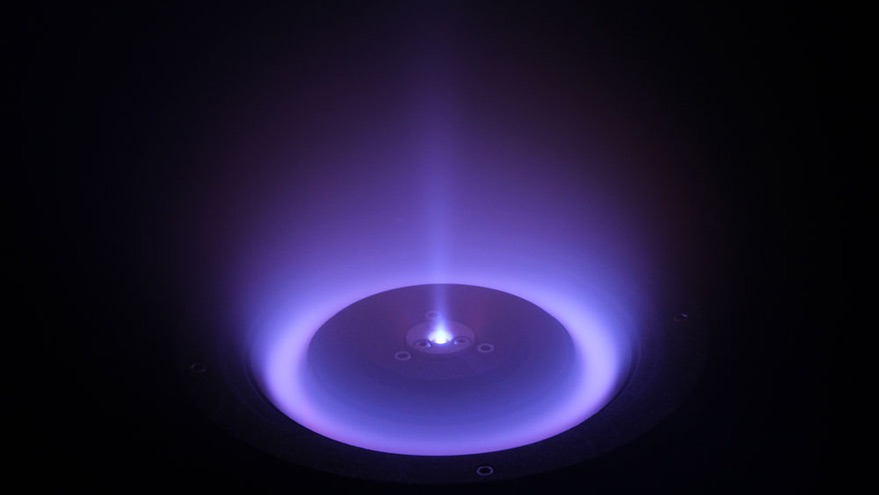WASHINGTON — Astra Space announced April 12 an order of electric thrusters by LeoStella, part of the company’s efforts to move beyond launch.
Astra said it sold “multiple” Astra Spacecraft Engines to LeoStella, the Seattle-based smallsat manufacturer. The companies did not disclose the value of the agreement or even the number of thrusters ordered, but Astra said those thrusters will be delivered starting later this year and continuing into 2023.
Tod Byquist, director of programs and supply chain at LeoStella, said in a statement that his company was looking for “innovative options” for providing propulsion for the satellites it manufactures. “Astra’s Spacecraft Engine has good flight heritage and the performance we need to get our satellites to space on schedule.”
Astra obtained the engine technology from Apollo Fusion, an electric propulsion startup that Astra acquired in 2021. That thruster was originally marketed as the Apollo Constellation Engine and was successfully demonstrated on a Sherpa tug by Spaceflight last summer.
The thruster can use krypton or xenon propellants, producing between 18 and 25 millinewtons of thrust with an input power of 400 watts. A “Max” version of the thruster, using 1,450 watts, can produce 54 to 60 millinewtons of thrust with five times the total impulse as the baseline model.
The sale of thrusters to LeoStella is part of a second phase of Astra’s long-term strategy that company founder and chief executive Chris Kemp discussed in a March 31 earnings call. Phase 1, he said, was the development of small launch vehicles and selling those launch services. Phase 2, he said, is “focused on productizing core space technologies.”
“Astra plans to develop, license and acquire core space technologies that will be productized and incorporated into our rockets, satellites and other infrastructure that will be used to deliver space services. Core technologies include propulsion and solar power,” he said, citing the Apollo Fusion acquisition and its electric thrusters as one example.
A third phase, he said, involves vertical integration of its technologies “into an Astra constellation, which will be optimally launched and maintained by the Astra launch system, allowing us to power the space economy.”
The company’s near-term focus remains on launch, though. After successfully returning its Rocket 3.3 vehicle to flight March 15, Astra is now preparing for a campaign of three launches for NASA’s Time-Resolved Observations of Precipitation structure and storm Intensity with a Constellation of Smallsats (TROPICS) Earth science mission, a constellation of six cubesats. Those launches are scheduled for this spring from Cape Canaveral. The company has a goal of monthly launches by the end of this year.
Kemp and Kelyn Brannon, Astra’s chief financial officer, said on the earnings call that the company will be working this year on a new vehicle, Rocket 4. “It’s going well,” Kemp said of development of the vehicle, but did not go into specifics. “We do remain on track to do some test flights of the 4.0 version of the rocket later this year.”
Astra reported no revenue in 2021, stating in a Securities and Exchange Commission filing that was still a “developmental stage company” until its first paid commercial launch for NASA in February 2022. Astra recorded a net loss of $257.8 million in 2021 and adjusted EBITDA of negative $102.8 million.
Brannon said the company was adjusting its spending to focus on “capital efficiency” as it works on Rocket 4 and builds out a new factory at its Alameda, California, headquarters. “Our spending adjustments give me greater comfort about Astra’s liquidity in 2022 and 2023,” when Rocket 4 production ramps up, she said.

